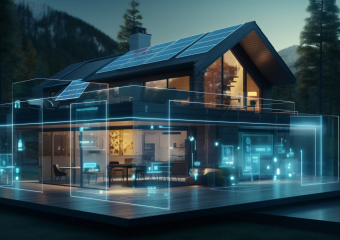NewHomeX Guide to Energy-Efficient Homes That Save Money & the Planet
Energy-efficient homes have become a cornerstone for anyone looking to reduce utility expenses while minimizing their environmental footprint. NewHomeX has developed an insightful guide that navigates homeowners, builders, and designers through the best practices and innovations in creating homes that are not only economically prudent but also eco-friendly. Whether you’re building from scratch or upgrading an existing property, embracing energy efficiency is a win-win commitment that benefits your wallet and the planet.
Understanding Energy Efficiency in Homes
Energy efficiency in residential buildings means using less energy to perform the same tasks, such as heating, cooling, lighting, and powering appliances. This is achieved through well-thought-out design, superior insulation, smart technology, and sustainable materials. The core idea is to make sure that every watt of energy consumed delivers maximum value, thereby reducing energy waste.
NewHomeX emphasizes that modern energy-efficient homes rely heavily on a whole-house approach. This involves evaluating and optimizing all components of the home collectively — from the structure and windows to HVAC systems and lighting. The goal is to create a synergistic environment where each improvement amplifies the others, producing substantial energy savings over time.
Key Components of an Energy-Efficient Home
- High-Performance Insulation and Windows
Insulation is the first line of defense against heat loss in the winter and heat gain in the summer. NewHomeX stresses the importance of investing in high-quality insulation materials for walls, attics, and floors. Additionally, energy-efficient windows with multiple panes, gas fills, and low-emissivity (Low-E) coatings can dramatically reduce thermal transfer and prevent drafts.
- Efficient Heating, Ventilation, and Air Conditioning (HVAC) Systems
An energy-efficient home incorporates HVAC units that are sized correctly and equipped with advanced technology such as variable speed compressors and smart thermostats. These features optimize energy consumption by adjusting output to fit the exact needs of the home. Regular maintenance, including duct sealing, is also vital to preserving system efficiency.
- Renewable Energy Integration
Harnessing renewable energy, such as solar or wind power, is a hallmark of energy-efficient homes. Newguide highlights the growing availability of solar panel kits and battery storage units that allow homeowners to generate their own electricity, reducing dependence on fossil fuels and long-term utility costs.
- Smart Home Technology
Automated lighting, smart thermostats, and energy-monitoring systems enable homeowners to track and control energy use in real-time. These technologies offer convenience and significant savings by ensuring that energy is only used when and where it’s needed.
- Water Efficiency
While primarily focused on electricity and heating, energy-efficient homes also consider water conservation. Low-flow fixtures, rainwater harvesting systems, and drought-resistant landscaping reduce the energy required for water heating and distribution.
Benefits Beyond Savings
Though reduced utility bills are a major motivator, energy-efficient homes offer several additional advantages:
- Increased Comfort: Stable indoor temperatures with fewer drafts and cold spots make for a cozier living experience.
- Improved Air Quality: Enhanced ventilation systems help reduce indoor pollutants and moisture buildup.
- Higher Resale Value: Homes with energy-efficient features often attract buyers who appreciate reduced operating costs and sustainability.
- Environmental Impact: Lower energy consumption translates directly into reduced greenhouse gas emissions and conservation of natural resources.
Steps to Making Your Home More Energy Efficient
NewHomeX suggests starting with an energy audit, a professional evaluation that identifies where your home loses energy and which upgrades will yield the greatest return. Based on this, a homeowner can take incremental steps such as sealing leaks, upgrading insulation, switching to LED lighting, or installing programmable thermostats.
For new constructions, the guide advises integrating energy efficiency from the design phase by orienting the building to maximize natural light, selecting durable and sustainable materials, and incorporating advanced building envelopes.
Government incentives and rebates for energy-efficient renovations and solar installations can make these improvements more affordable. Checking local programs and federal tax credits is essential to capitalize on available benefits.
Conclusion
In guiding the path to energy-efficient homes, NewHomeX underscores that it’s not just about cutting costs but also about fostering a sustainable future. Incorporating smart design, advanced technology, and mindful energy use leads to homes that respect the planet and enrich the lives of their occupants. Whether through simple changes or comprehensive upgrades, energy efficiency is a practical, impactful goal worth pursuing for everyone. Embracing this approach paves the way to a healthier wallet and a healthier planet—true success by any measure.







